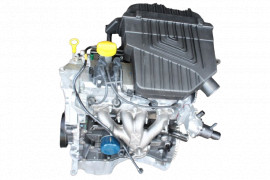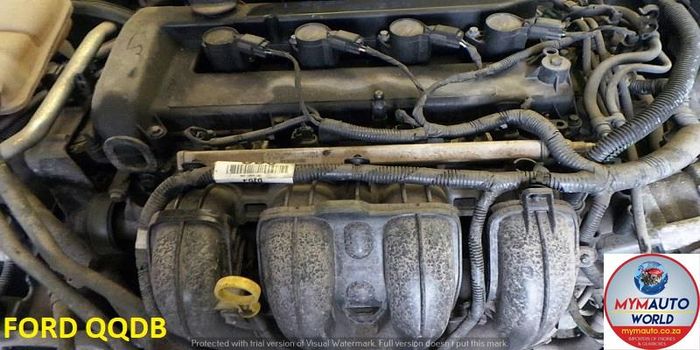Improve Your Trip with a High-Quality Opel Corsa Engine
Improve Your Trip with a High-Quality Opel Corsa Engine
Blog Article
Discovering the Inner Functions of a Compact Vehicle's Engine System
As motorists, we frequently consider granted the elaborate processes that happen within the boundaries of our automobile's engine system. The small yet intricate machinery that pushes us forward is a marvel of design precision and control. From the regulated explosions in the burning chamber to the meticulous timing of fuel shot, every component plays a critical role in the smooth procedure of the engine. In this expedition of a portable car's engine system, we will certainly unravel the internal functions of this mechanical symphony, clarifying the mysteries that drive us forward on our everyday trips.
Combustion Refine Summary
The combustion process in a compact lorry's engine system is an important system that effectively converts fuel right into energy to power the automobile. This procedure happens within the burning chamber of the engine, where fuel and air mix, fire up, and produce controlled explosions. The combustion process contains 4 primary phases: consumption, compression, exhaust, and power.
During the consumption stage, the piston moves downward, drawing in a mixture of air and fuel right into the combustion chamber. This descending activity creates the power required to drive the lorry. This cyclic burning procedure is basic to the operation of a small vehicle's engine system, making certain reliable power conversion for propulsion.
Piston and Cyndrical Tube Interaction

The piston's accurate fit within the cyndrical tube is important for preserving optimum compression and avoiding energy loss throughout combustion. Limited clearances in between the piston and cylinder wall surfaces make certain reliable securing, allowing the piston to relocate efficiently without allowing gases to leakage past. Appropriate lubrication is likewise important to decrease friction and wear in between these elements, boosting longevity and performance.
Moreover, the design and materials used in producing the piston and cylinder effect engine effectiveness and toughness. Modern engines often employ light-weight yet resilient products like aluminum alloys for pistons and cyndrical tube linings to decrease inertia and enhance thermal efficiency. On the whole, the unified interaction in between the piston and cylinder is fundamental to the engine's performance and overall efficiency.
Gas Shot System Performance
Gas injection systems in portable automobile engines play an essential role in specifically delivering gas to the combustion chamber for controlled and reliable ignition. The fuel injection system functions by infusing fuel into the burning chamber at the ideal moment during the engine's procedure (opel corsa engine). This exact timing guarantees that the gas blends equally with the air for proper burning, leading to improved fuel effectiveness and minimized exhausts
There are mainly two types of fuel shot systems utilized in compact automobile engines: port gas shot (PFI) and straight gas shot (DFI) PFI systems infuse fuel into the consumption port before the intake valve, while DFI systems infuse fuel directly right into the burning chamber. Both systems have their benefits, with DFI supplying better fuel atomization and PFI providing an extra cost-efficient remedy.
Comprehending Engine Cooling Mechanisms
Effective operation of a Get More Information small vehicle's engine depends heavily on the efficiency of its cooling systems. Engine cooling is necessary to protect against overheating, which dig this can bring about severe damage and reduced performance. The air conditioning system in a portable car normally includes a number of elements collaborating to control the engine temperature. One critical component is the radiator, which utilizes coolant to absorb warm from the engine. As the hot coolant flows with the radiator, it releases heat right into the air, cooling prior to going back to the engine. The water pump flows the coolant via the engine and radiator, ensuring a consistent circulation to regulate temperature. In addition, the thermostat helps control the coolant circulation to maintain optimal engine temperature. Some lorries additionally have cooling followers that trigger when extra air conditioning is required, such as during rush hour or heat. Recognizing these engine cooling devices is crucial for preserving the efficiency and long life of a compact lorry's engine system.

Exhaust System Elements Explained
The ideal performance of a portable car's engine cooling systems depends on a complementary system recognized as the exhaust system, which comprises different necessary components for guaranteeing efficient exhausts and engine efficiency. The exhaust manifold accumulates exhaust gases from the engine's paths and cyndrical tubes them to the catalytic converter.
One crucial component of the exhaust system is the oxygen sensor, which checks the oxygen levels in the exhaust gases to assist regulate fuel usage and ensure optimal engine performance. opel corsa engine. Additionally, the resonator may be present in some exhaust systems to minimize sound degrees. On the whole, the exhaust system plays a vital duty in keeping engine efficiency, minimizing hazardous emissions, and making certain a quieter driving experience for small automobile proprietors

Conclusion
In final thought, the visit the website portable automobile's engine system is a complex mix of components that collaborate to assist in the burning process, convert fuel into power, and get rid of waste gases. Recognizing the internal functions of the engine system, including the piston and cyndrical tube interaction, gas shot system, engine cooling mechanisms, and exhaust system elements, is vital for keeping optimal performance and effectiveness of the vehicle.
The burning process in a small vehicle's engine system is an essential mechanism that successfully converts gas into energy to power the automobile.Fuel injection systems in compact vehicle engines play an essential function in precisely providing gas to the combustion chamber for effective and regulated ignition.There are mainly 2 types of gas injection systems made use of in portable car engines: port fuel injection (PFI) and direct fuel injection (DFI) Understanding these engine cooling systems is crucial for preserving the efficiency and durability of a compact lorry's engine system.
The optimum functioning of a small automobile's engine cooling devices depends on a complementary system recognized as the exhaust system, which comprises various necessary parts for ensuring effective discharges and engine efficiency.
Report this page